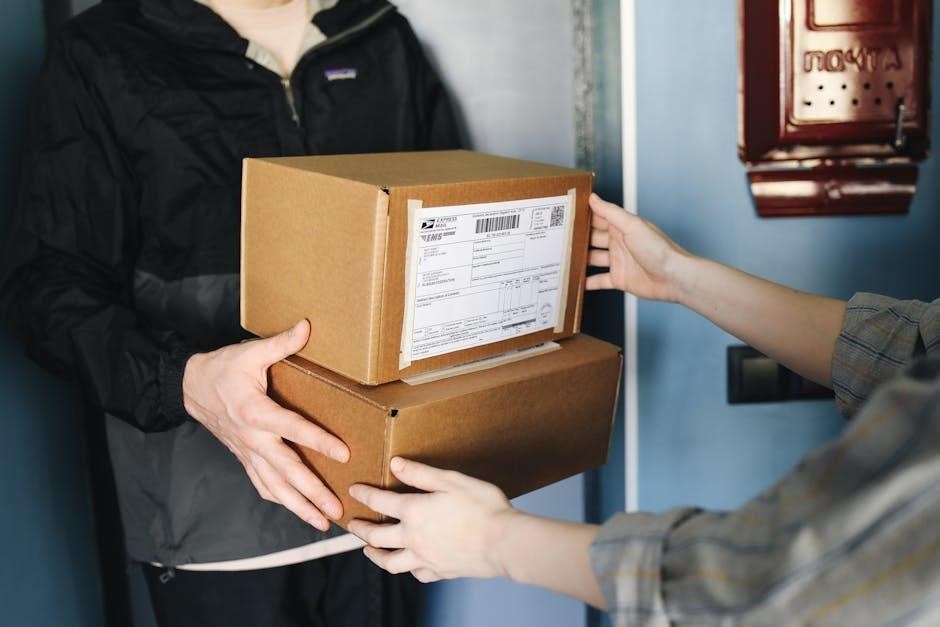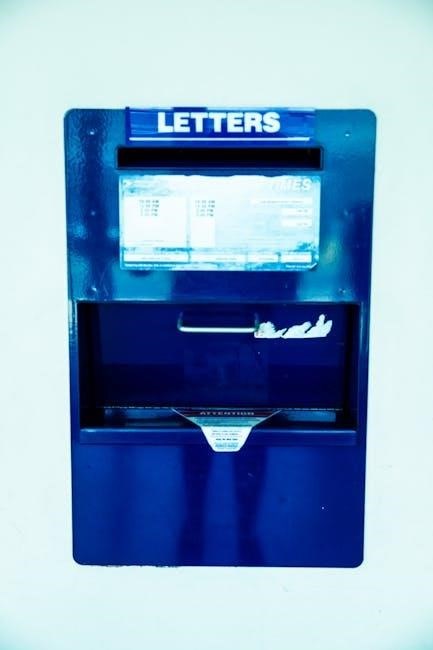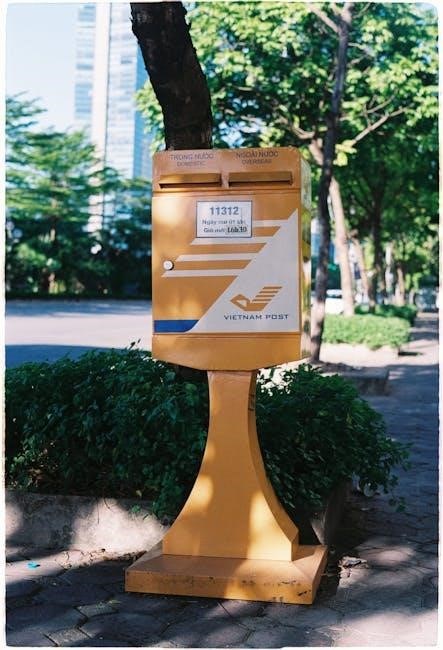lasik post operative instructions
Immediate Post-Operative Care
LASIK recovery starts immediately after surgery. Rest is paramount. After LASIK, plan to relax at home. A nap is often recommended to begin recovery. Keep eyes closed to minimize strain and promote initial healing.
Rest and Relaxation
Prioritizing rest and relaxation immediately following LASIK surgery is crucial for optimal healing. Like any surgical procedure, adequate rest allows the body to focus energy on recovery. Aim to sleep for 3-4 hours or simply keep your eyes closed for extended periods to minimize strain.
Avoid activities that require visual focus, such as reading or watching television. Creating a calm and dimly lit environment can further promote relaxation. Arrange for someone to help with household tasks and errands, allowing you to fully dedicate your time to resting your eyes.
Remember, rest is not just about physical inactivity; it also involves mental relaxation. Steer clear of stressful situations and engage in calming activities such as listening to soothing music or practicing gentle meditation. The initial hours and days are critical, so make rest your top priority.
Following LASIK surgery, wearing protective eyewear is crucial, especially while sleeping. Your surgeon will provide specific shields or glasses. These prevent accidental rubbing or pressure on your eyes, vital for healing.
Rubbing your eyes, particularly in the initial recovery phase, can disrupt the corneal flap created during LASIK. Protective eyewear acts as a barrier, safeguarding against this risk.
Even during daytime, consider wearing sunglasses, especially outdoors. This protects your eyes from bright light and potential irritants. Choose sunglasses with UV protection to shield against harmful rays;
Adhere to your doctor’s instructions on eyewear usage. Consistent protection, day and night, minimizes complications. Remember, these precautions are temporary but essential for successful LASIK recovery. Prioritize protecting your eyes to ensure optimal healing.
Post-LASIK, diligently use prescribed eye drops. These are crucial for healing and preventing infection. Your surgeon will provide a specific schedule, so follow it carefully. Typically, antibiotics and anti-inflammatory drops are prescribed.
Antibiotic drops prevent bacterial infections, a risk after any surgery. Anti-inflammatory drops reduce swelling and discomfort. Lubricating drops, or artificial tears, combat dryness, a common post-LASIK side effect.
Administer drops as instructed, even if your eyes feel fine. Consistency is key to a smooth recovery. Wash your hands thoroughly before applying drops to avoid contamination.
If you experience stinging or burning upon application, consult your doctor. Do not discontinue use without professional advice. Proper use of eye drops plays a vital role in your LASIK recovery. Adherence to the prescribed regimen ensures optimal healing.
The first week post-LASIK involves managing potential discomfort. Some pain is normal as the eyes heal. Use prescribed pain relievers as directed to alleviate any soreness or aching.
After LASIK, some discomfort is expected. The level varies, but pain management is essential. Use prescribed pain medication as directed by your surgeon. Over-the-counter pain relievers may also help, but consult your doctor first. Avoid rubbing your eyes, as this can increase pain and disrupt healing. Artificial tears can soothe irritated eyes.
Resting your eyes is vital for reducing discomfort. Avoid activities that strain your eyes, such as reading or screen time; Wear sunglasses outdoors to protect your eyes from light sensitivity. If pain worsens or doesn’t improve with medication, contact your LASIK surgeon promptly. They can assess the situation and provide further guidance.
Remember, each person’s experience differs, so communicate openly with your doctor about your pain levels for personalized management strategies. Following their advice ensures optimal recovery and comfort.
Protective Eyewear
Protecting your eyes after LASIK is paramount. Your surgeon will provide protective eyewear. Wear sunglasses outdoors to shield from sunlight and glare. At night, use the provided eye shields or goggles. This prevents accidental rubbing while sleeping. Rubbing can disrupt the corneal flap and impede healing.
Be vigilant during the day. Avoid situations where your eyes might be bumped or exposed to debris. If working in dusty conditions, wear safety glasses. The protective eyewear is temporary but crucial. It safeguards your eyes during the vulnerable initial recovery phase.
Follow your surgeon’s instructions precisely. Consistent use of protective eyewear minimizes risks. It promotes proper healing and optimal visual outcomes. Remember, diligence in protecting your eyes ensures the success of your LASIK procedure and long-term vision health.
Use of Prescribed Eye Drops
After LASIK, use prescribed eye drops diligently. These drops are crucial for healing. They prevent infection and manage dryness. Antibiotic drops are typically prescribed. Use as directed to avoid infection. Artificial tears are vital for lubrication.
Dry eyes are common after LASIK. Follow your doctor’s instructions for frequency. Lubricate eyes even when they feel moist. Steroid drops may also be prescribed. They reduce inflammation and promote healing. Use them as directed to prevent complications.
Maintain a strict schedule for eye drops. Set reminders to avoid missing doses. Proper use of eye drops is essential. It ensures a smooth recovery. Never share eye drops with others. This prevents the spread of infection.
Contact your doctor with concerns. Report any unusual symptoms or side effects. Consistent and correct use of eye drops optimizes healing and vision.
First Week After LASIK
Managing Discomfort and Pain
After LASIK, some discomfort is expected. Pain levels vary among patients. Use prescribed pain medication as directed. Over-the-counter pain relievers may also help. Contact your doctor with excessive pain.

Long-Term Recovery (Months 1-6)
Gradual Vision Improvement
LASIK recovery extends beyond the immediate post-operative period, with gradual vision improvements occurring over months 1-6. Initially, fluctuations in vision are normal as the eyes heal and adjust to the corneal reshaping. During this phase, clarity may vary, and some days might seem sharper than others. Consistent use of prescribed eye drops is crucial to maintain moisture and aid healing.
Patience is key as the brain adapts to the new visual input, refining focus over time. Most patients experience continued enhancement of their vision during these months. Regular follow-up appointments with your LASIK surgeon are essential. They allow for monitoring progress, addressing concerns, and ensuring optimal visual outcomes. Any persistent blurriness or vision changes should be promptly reported to your doctor.
Remember, each individual’s recovery timeline varies, so comparing your progress to others might be misleading. Focus on adhering to your doctor’s recommendations and maintaining open communication. This will help you achieve the best possible visual outcome from your LASIK procedure.

Long-Term Recovery (Months 1-6)
Managing Dry Eyes
Dry eyes are a common side effect following LASIK surgery, often persisting for several months during long-term recovery. LASIK can temporarily disrupt tear production. This leads to discomfort, gritty sensations, and blurred vision. Consistent use of artificial tears is crucial to alleviate these symptoms. Your surgeon will typically prescribe specific eye drops tailored to your needs.
Employ lubricating drops frequently throughout the day, even if you don’t feel immediate dryness. Consider using thicker, gel-based drops at night for extended relief. Environmental factors like air conditioning and prolonged screen time can exacerbate dry eyes, so be mindful of these triggers.
In some cases, prescription medications or punctual plugs may be recommended to enhance tear production or retention. Maintain open communication with your eye doctor. They can adjust your treatment plan as needed. With diligent management and patience, dry eye symptoms typically improve over time as the eyes heal.

Long-Term Recovery (Months 1-6)
Importance of Follow-Up Appointments
Follow-up appointments are crucial during the long-term recovery phase after LASIK. These visits allow your surgeon to monitor your healing progress and vision stability. They ensure early detection of any potential complications. Regular check-ups help to confirm that your cornea is healing correctly. Also, they help to make sure that your vision is improving as expected.
During these appointments, your doctor will assess your visual acuity. They will also evaluate the overall health of your eyes. These evaluations are vital for identifying and addressing any issues. These issues can include dry eyes, inflammation, or regression of the refractive correction. Don’t hesitate to discuss any concerns or changes in your vision with your surgeon during these visits.
Adhering to the recommended schedule of follow-up appointments is essential for achieving optimal long-term outcomes and maintaining the benefits of your LASIK procedure. Your active participation in these check-ups is a key component of a successful recovery journey.

Lifestyle Adjustments for Recovery
Small lifestyle adjustments aid LASIK recovery. Proper hydration and a nutritious diet support eye health. Drink water to stay hydrated. Consume leafy greens and citrus fruits. Good habits promote overall healing.
Hydration and Nutrition
Following LASIK, lifestyle adjustments contribute significantly to a smoother and more effective recovery. Among these, hydration and nutrition play pivotal roles in supporting overall eye health and promoting optimal healing. Proper hydration is essential, as it helps maintain the moisture balance in your eyes, combating potential dryness that can occur post-surgery.
Drinking plenty of water throughout the day ensures that your eyes remain lubricated and comfortable, reducing the risk of irritation and discomfort. Aim to incorporate hydrating foods like cucumbers and watermelons into your diet.
Equally important is a balanced and nutritious diet. Nutrients like vitamins A, C, and E, along with omega-3 fatty acids, contribute to eye health and can aid in the healing process. Incorporate leafy greens, citrus fruits, nuts, and fish into your meals to provide your eyes with the essential building blocks they need. A well-nourished body supports faster and more efficient recovery, leading to better outcomes after LASIK surgery.
Sleep Habits
Adequate sleep habits are crucial for a successful LASIK recovery. Prioritize getting sufficient rest each night to allow your eyes to heal and rejuvenate. Aim for at least 7-8 hours of quality sleep, as this helps reduce eye strain and promotes overall well-being.
Establish a consistent sleep schedule, going to bed and waking up around the same time each day, to regulate your body’s natural sleep-wake cycle. Before bed, avoid screen time and other stimulating activities that can interfere with sleep.
Consider using a humidifier in your bedroom to maintain moisture levels in the air, preventing dry eyes overnight. Additionally, wearing protective eyewear while sleeping can prevent accidental rubbing or pressure on your eyes, ensuring undisturbed healing. Remember, restful sleep contributes significantly to a smoother and more comfortable LASIK recovery experience.
Potential Side Effects and Complications
After LASIK, some experience dry eyes. This is often temporary. Use prescribed or over-the-counter lubricating eye drops regularly. Consistent use keeps eyes moist and comfortable. Follow your doctor’s recommendations to manage dryness effectively.
Dry Eyes Management
Dry eyes are a common side effect after LASIK surgery, affecting a significant percentage of patients; Tear production tends to diminish post-surgery, leading to discomfort; Consistent use of lubricating eye drops, whether prescribed or over-the-counter, becomes essential. These drops help maintain moisture, alleviating dryness and irritation.
Regular application, even when eyes feel comfortable, is often recommended for several weeks or months. Your doctor may suggest specific types of eye drops, tailored to your needs. In some cases, punctal plugs might be considered. These tiny devices are inserted into tear ducts to reduce tear drainage;
Drinking plenty of water is beneficial, aiding overall hydration and potentially easing dry eye symptoms. Humidifiers, especially during sleep, can add moisture to the air, preventing eyes from drying out overnight. Limiting screen time and taking breaks during reading can reduce eye strain, further minimizing dryness.
If dry eye symptoms persist or worsen, consulting your LASIK surgeon is important. They can assess the situation and recommend further management strategies.
